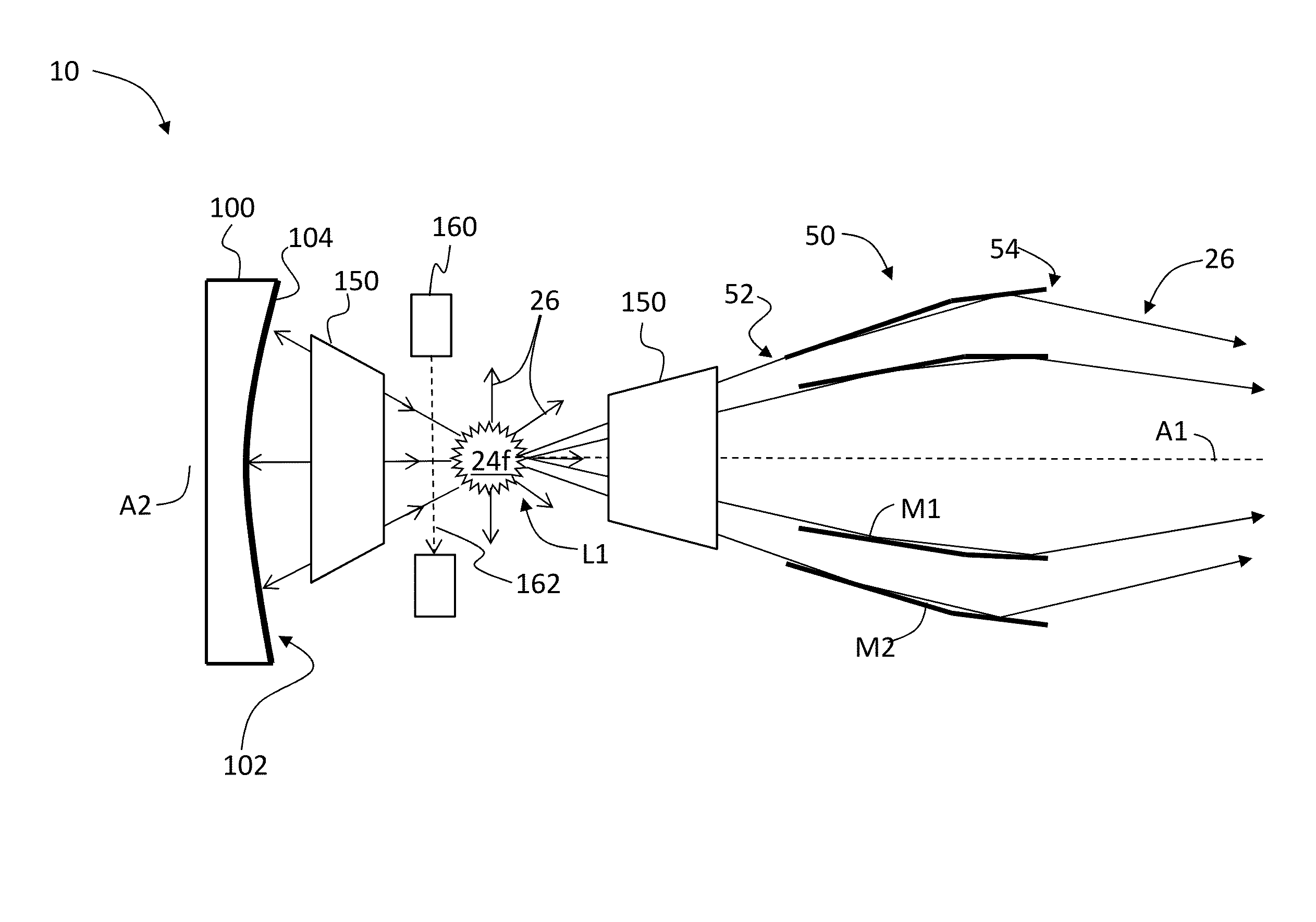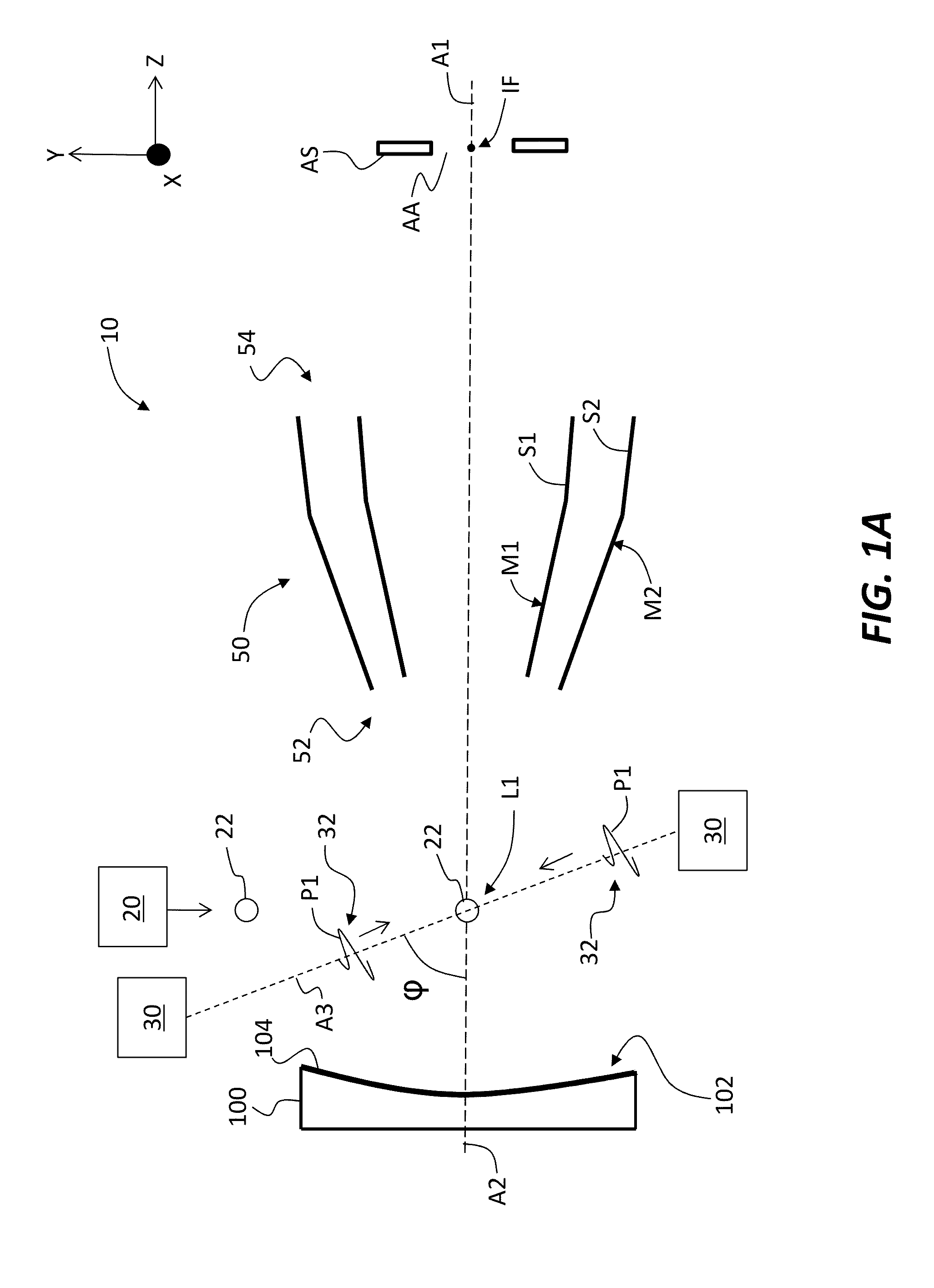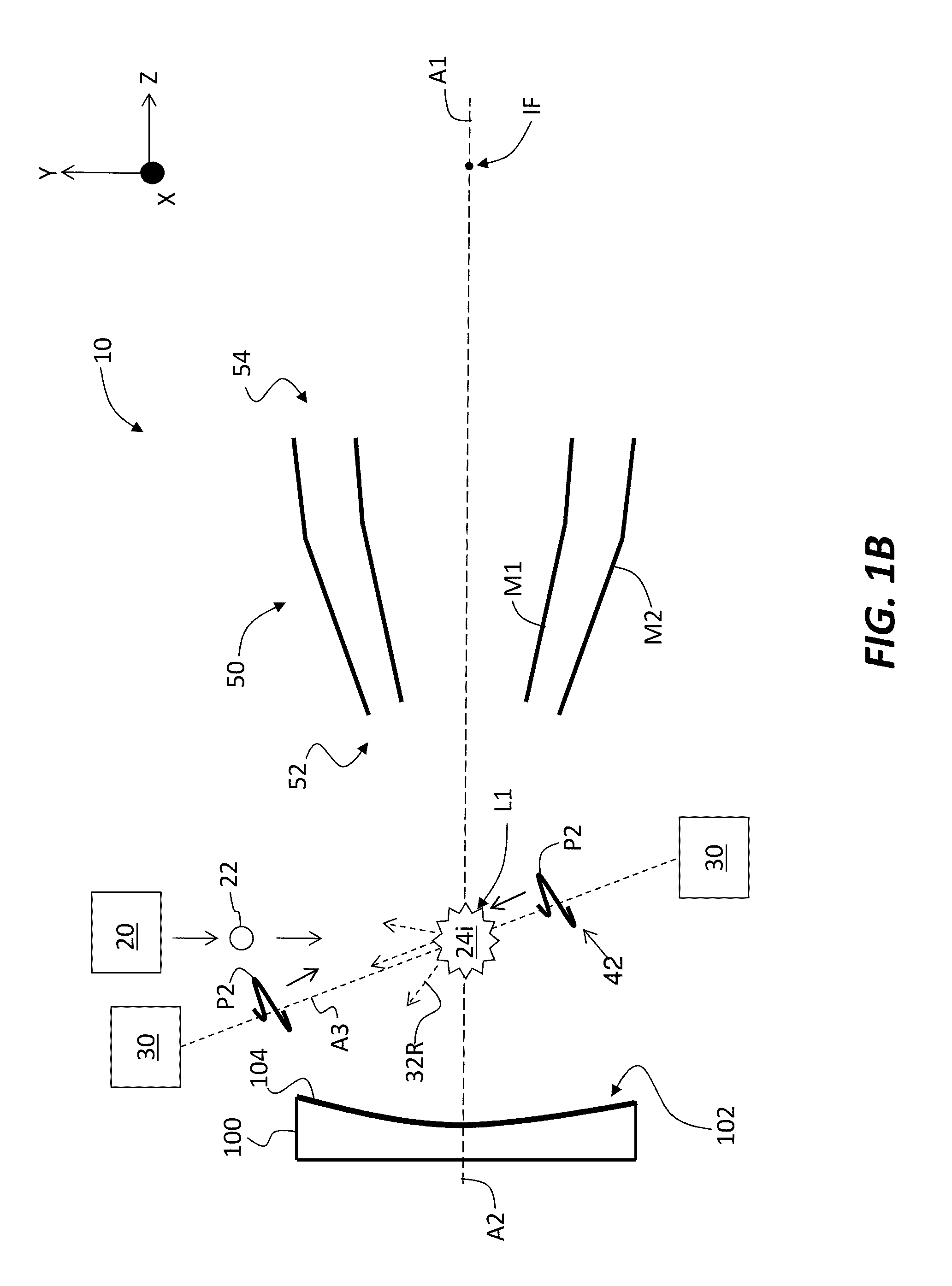Source-collector modules for EUV lithography employing a GIC mirror and a LPP source
a source-collector module and source-collector technology, applied in the field of source-collector modules for use with euv lithography systems, can solve the problems of lpp-mcc approach, severely limit the lifetime and reliability of mcc, and the power delivered from the lpp source to the if aperture is inadequate, so as to increase the solid angle of collection and reduce the opacity
- Summary
- Abstract
- Description
- Claims
- Application Information
AI Technical Summary
Benefits of technology
Problems solved by technology
Method used
Image
Examples
Embodiment Construction
[0123]The disclosure relates to EUV lithography and in particular to SoCoMo configurations for use with EUV lithography systems, wherein the SoCoMos employ an LPP EUV radiation source, and a GIC. The SoCoMos have a variety of example configurations, as explained below.
Limiting Reflected IR Collection when Using Low-Mass Target
[0124]FIGS. 1A through 1D are schematic diagrams of an example embodiment of an MCC-LPP-GIC SoCoMo (“SoCoMo”) 10 that includes a GIC 50 and an optional MCC 100. The GIC 50 includes a central axis A1 and, in this example, two concentric GIC mirrors M1 and M2 shown in a cross-section. The GIC mirrors M1 and M2 have reflective surfaces S1 and S2 that include a grazing-incidence reflective coating, which in an example is formed from Ru. In an example, the reflective coating is sufficiently thick for GIC mirrors M1 and M2 to tolerate some erosion due to debris generated in the operation of the SoCoMo, as discussed below. Note that mirrors M1 and M2 are rotationally ...
PUM
 Login to View More
Login to View More Abstract
Description
Claims
Application Information
 Login to View More
Login to View More - R&D
- Intellectual Property
- Life Sciences
- Materials
- Tech Scout
- Unparalleled Data Quality
- Higher Quality Content
- 60% Fewer Hallucinations
Browse by: Latest US Patents, China's latest patents, Technical Efficacy Thesaurus, Application Domain, Technology Topic, Popular Technical Reports.
© 2025 PatSnap. All rights reserved.Legal|Privacy policy|Modern Slavery Act Transparency Statement|Sitemap|About US| Contact US: help@patsnap.com



